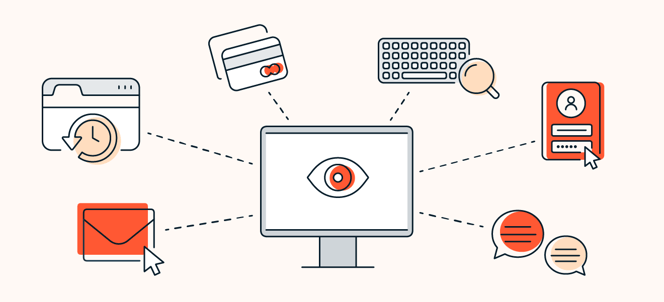Anti-Spyware Software Work

Anti-spyware software works by employing a combination of techniques and technologies to detect, prevent, and remove spyware from computer systems, networks, and devices. The primary goal of anti-spyware software is to protect users' privacy and security by identifying and eliminating spyware infections and preventing unauthorized surveillance and data theft. Here's how anti-spyware software works:
-
Spyware Detection:
- Anti-spyware software uses various detection techniques to identify and detect spyware infections on the system. This includes signature-based detection, heuristic analysis, behavioral analysis, and real-time monitoring of system activity.
- Signature-based detection involves comparing files, processes, and system activities against a database of known spyware signatures or patterns. If a match is found, the anti-spyware software flags the file or activity as malicious and takes appropriate action.
- Heuristic analysis and behavioral analysis techniques help identify suspicious or anomalous behavior that may indicate the presence of spyware, even if specific signatures are not yet known. These proactive detection methods allow anti-spyware software to detect emerging spyware threats and variants based on their behaviors and characteristics.
-
Real-Time Protection:
- Anti-spyware software provides real-time protection by actively monitoring system processes, files, and network traffic for signs of spyware activity. Real-time protection mechanisms intercept and block spyware threats in real-time as they attempt to infiltrate or compromise the system.
- Real-time protection features may include on-access scanning, memory scanning, behavior monitoring, and network traffic analysis to detect and block spyware in real-time as it attempts to collect sensitive information or transmit data to remote servers.
-
Scanning and Removal:
- Anti-spyware tools perform regular system scans to detect and remove spyware infections from files, applications, and system components. Scanning techniques may include on-demand scanning, scheduled scans, and continuous monitoring of system files and memory for signs of spyware.
- When spyware is detected, anti-spyware software takes appropriate action to quarantine, disinfect, or remove infected files to prevent further harm to the system and safeguard users' privacy and security.
-
Quarantine and Remediation:
- Anti-spyware software quarantines infected files or components to prevent them from causing further harm to the system. Quarantined items are isolated from the rest of the system and can be safely removed, repaired, or analyzed to determine the extent of the infection and remediate any damage.
- Remediation features help repair and restore affected system components, remove spyware remnants, and undo changes made by spyware infections to restore the system to a clean and secure state.
-
Automatic Updates:
- Anti-spyware software updates its spyware definition databases, detection algorithms, and security features regularly to ensure protection against the latest spyware threats. Automatic updates download and install new signatures, patches, and security updates to keep the software current and effective against evolving threats.
- By staying up-to-date with the latest threat intelligence and security updates, anti-spyware software enhances its ability to detect, prevent, and remove spyware effectively and efficiently.
Overall, anti-spyware software plays a critical role in protecting users' privacy and security by detecting, preventing, and removing spyware infections from computer systems, networks, and devices. By deploying anti-spyware software, users can defend against privacy breaches, data theft, and unauthorized surveillance, and maintain control over their personal information and digital assets.
Thank you,
